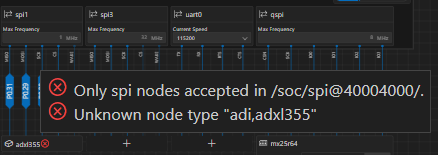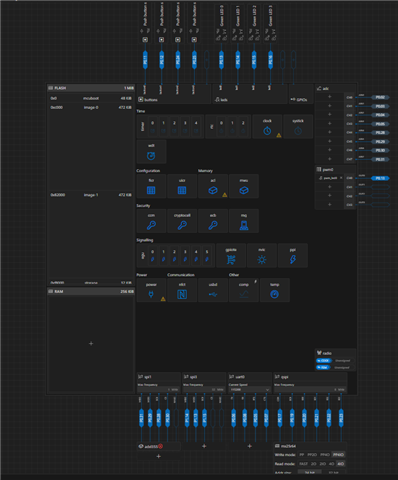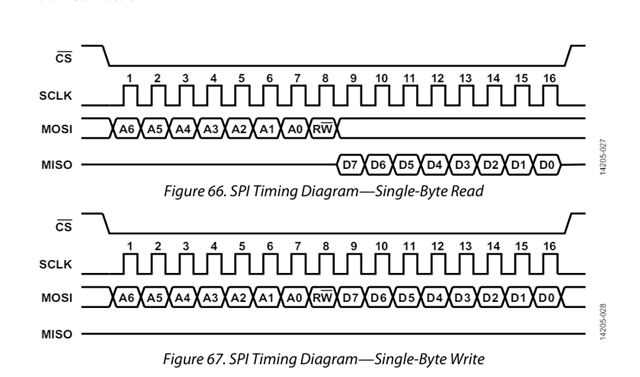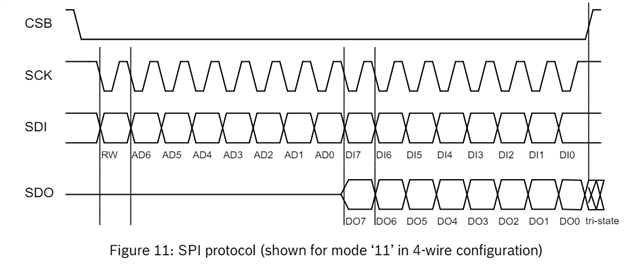Hi,
I am developing an application to read the ADXL355 via SPI. I have not been able to read the register of my accelerometer. And I don't know why.
I tried reading the register of the device ID, but I still got 0. Maybe it is a hardware problem.
I built the application and suddenly I was not able to print messages to the port anymore "COM3: Access denied".
I checked the device tree file and I see this messages, I am not sure if these are the cause of not being able to read the registers and of the com port error:




I will also add a zip file of my project in case it is useful.
Thank you very much.
Adrián Lopez Vudoyra.
---------------------------------------------------------------------
Edit, I restarted the computer and the COM Port works now. I am still not able to read the registers. I tried reseting the device first and then reading, but it is still not returning anything. I thought of it being a hardware problem, but wouldn't it return an error at some point in the init()?





